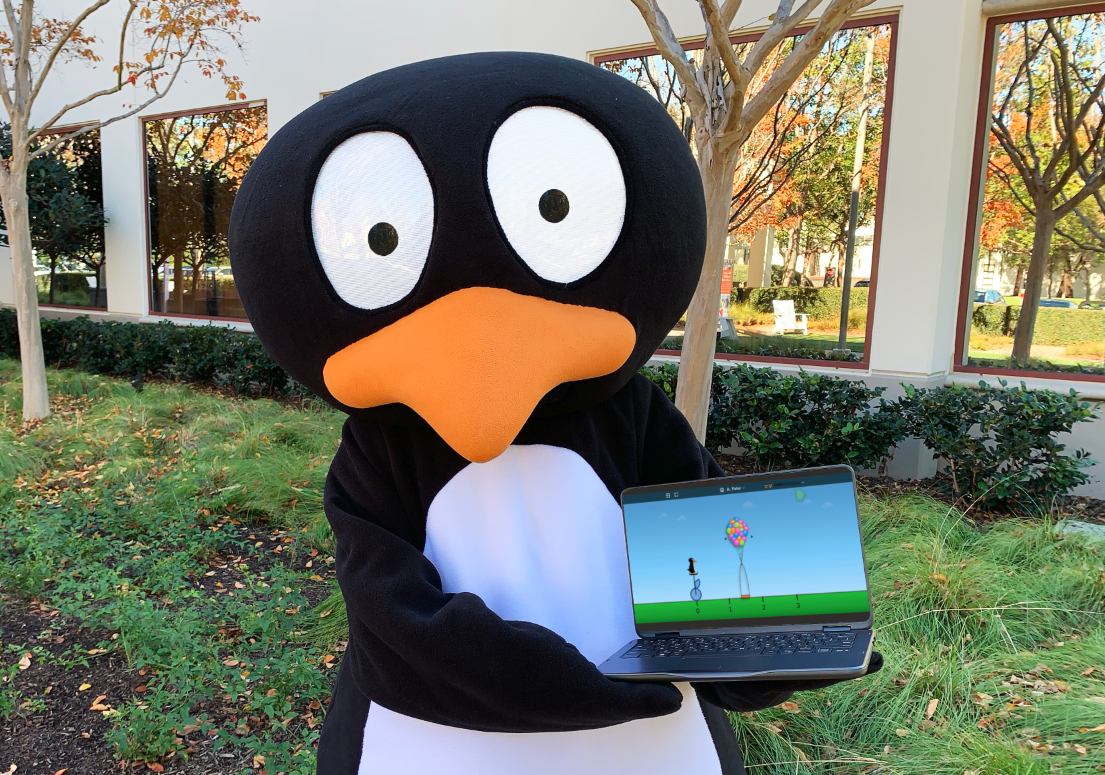How MIND Research Institute Moved Quickly to Offer Free Math Education to Students Learning at Home
Cisco Blogs | Corporate Social Responsibility
MIND Research Institute’s mission is to ensure that all students are mathematically equipped to solve the world’s most challenging problems. ST Math is a U.S. based, award-winning visual instructional program that includes more than 35,000 puzzles, with interactive representations of math topics that align to all state standards. With visual learning, there are no language barriers, so the program is accessible to all students, regardless of skill level or language background. In the 2016-2017 school year, 29,290 students at 185 ST Math partner schools in 13 states showed an average increase in statewide percentile rankings of 7.88 points, compared to -1.16 points for similar control schools.
Brett Woudenberg, CEO of MIND Research Institute since 2017, is a veteran entrepreneur of the education technology industry and a father of three daughters. MIND Research Institute was a natural fit for Brett since it reflected the values that he learned in life, including the importance of struggle, learning from failure, and persistence. He recently sat down with us to discuss how, despite massive school closures, ST Math is helping students by giving parents direct access to their program:
How does ST Math’s visual instruction program make math more accessible to all students, including those with learning difficulties and language barriers?
ST Math is a visual instruction program designed for elementary and middle school students with a unique patented approach. The S.T. in ST Math stands for spatial-temporal. Essentially, it leverages the brain’s innate spatial-temporal reasoning ability to solve mathematical problems. ST Math provides students with equitable access to learning by use of its challenging puzzles and non-routine problem-solving. Still, the biggest key of all is that it gives informative, real-time feedback.
All students, regardless of language or proficiency level, can think deeply about mathematical concepts. When you present math as words and numbers on a page, some students can miss out on the crucial opportunity to understand the meaning behind the math. But ST Math guides students at all language proficiency levels and helps students visualize math concepts through our tricky puzzle challenges. ST Math’s impact on English-language learners is well documented, and it might even seem like we created our visual instructional program for those students. But that wasn’t the case at all. The program was designed to make sure that all students thrive, including the 3.3 million gifted students across the United States.
How has going direct to parents with no-cost access to your flagship program, ST Math, changed your growth strategy?
It wasn’t a growth strategy at all for us at this time. We had contemplated it for the future, but we were not immediately looking at moving in that direction. It was brought about by the mass school closures across the country. What we found were many schools and families were not ready to make such a rapid transition to at-home learning, and math is the most challenging subject for parents to teach their children. And so, it makes sense that parents struggle with math anxiety as well, making it very difficult for them to teach their kids.
We’ve had over one million students take advantage of our no-cost access to ST Math since massive school closures began in mid-March. We’re starting to see new waves of closures continue across the country. That figure may well reach five times the million students we’ve already served. The need is not going away, and it’s not even just in the U.S., it is abroad as well. People from 33 different countries have come to our site to sign up for free access to ST Math for their students. We don’t presently have ST Math available in multiple languages. Still, because it’s visual-based, it allows for a wide range of English-language learners to benefit from our program.
What were the challenges in pivoting to a direct-to-parents model?
We historically have worked directly with schools and districts. With families, it’s very different. We had to completely revamp our onboarding process to make it easy for parents to sign up and get their students learning as soon as possible. We knew that if we provided consistent support to all of our new users, then we would have accomplished our mission. We don’t just want schools and families to have access to ST Math; we want them to get the most out of it.
What resources and training have you provided to parents while their students are learning from home?
Parents can access our website www.STmath.com/coronavirus, and they can sign up at no cost through June 30. We’ll probably extend that because of the current projections around when kids will return to the classroom. But this same page also has resources for teachers, students, and families. There are things like tips and videos, blog posts, webinars.
We had a thriving Facebook community for school and district educators already. We moved quickly to set up a new Facebook community for parents. We’ve seen hundreds of parents joining each week, and the response has been just incredibly positive.
What are your plans for the direct-to-parent market for ST Math?
When we opened up the gate, we didn’t know what was going to happen. Our leadership team got together for a weekend huddle, and while we were on the phone for about an hour, 300 families signed up. So, we realized that something was about to happen that was far beyond what we could expect. Over the last four weeks, we have heard from parents loud and clear that there’s a huge need for high-quality online math instruction for their students. And the need is just incredibly compelling across the United States and the entire globe.
It’s challenging to think about the future right now, especially since we’re focused on meeting the needs of families and schools during the crisis. We know the demand is not going to go away after the crisis. In some ways, the need will be greater as students lose months of classroom time. We intend to continue to provide direct access to families in using ST Math at home.
We’re going to need some help to do that because we’re providing this at no cost. We’ve had tons of families pay it forward and provided donations as a way of saying thanks, which has been fantastic. With the help of our philanthropic supporters, like Cisco and others, we’ve been able to invest in a new ST Math platform for this upcoming school year. We built the platform with direct access in mind for homes and families. Our goal is to move our home access program to that new platform by this fall.
Our team is working right now on integration with Cisco WebEx so that there are opportunities for interaction. For example, while students are remote, their teachers can have a dialogue with them about their progress. Our new platform will have the capability of being fully customizable to local markets so we can more formally start to help with the needs that exist in other countries.
Can you tell us more about adaptive features that benefit both students and teachers?
We designed ST Math to be a flexible instructional tool because no two classrooms are the same. We have a couple of features of ST Math that are very critical for that. First, we allow students to self-pace through the content; they can spend as much time as it takes or as little time as it takes, depending on their level of knowledge. The platform also allows for the assignment of specific ST Math content to the students, so if a parent or a teacher wants to focus on a particular area, they can assign that. It tracks what they’re doing with their curriculum over the term.
The other thing that’s also adaptive about our approach is our mastery-based strategy of teaching math. Students have to pass each level with a score of 100 percent. In other words, all puzzles have to be correctly solved, and they need to do that before they can move onto the next level of the sequence. Each student has a personalized journey, and they can take as long as they want to or as little, but they have to achieve mastery. This method ensures that students are building and demonstrating a strong conceptual foundation.
What feedback have you been getting about how your program is helping students stay proficient in math?
It is interesting because there has undoubtedly been a considerable spike in the feedback. At this time, over the last four weeks, we’ve had a massive outpouring of thanks for making this possible.
We also have amassed a cult following of what we call JiJi lovers. JiJi is the penguin featured in the ST Math software games. Students help JiJi overcome obstacles by solving math puzzles, and they associate JiJi with the thrill of challenge and success. Children love JiJi, and they love using ST Math, and it gives them that math confidence like nothing else out there.
Does JiJi have any advice for students who are learning math from home for the first time?
JiJi doesn’t speak, but if our penguin friend could, we know that JiJi would want to tell students: Stay safe, stay healthy, and have no fear! Math education will continue, and JiJi is here to ensure that all students are mathematically equipped to solve the world’s most challenging problems.
To learn more about ST Math and the resources that they put together to help support students, parents, and teachers please visit: https://www.stmath.com/coronavirus





